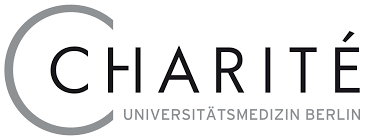
Charité – Universitätsmedizin Berlin, Campus Charité Mitte
Medizinische Klinik mit Schwerpunkt Rheumatologie
und Klinische Immunologie Berlin
Analyzing the Heterogeneity of Innate Lymphoid Cells and the Relationship with their Microenvironments in situ and in vivo
Innate lymphoid cells (ILCs) are thought to function as sensors within various organs in order to orchestrate tissue-specific immune responses. With cytokines as stimuli, ILCs are very sensitive tissue sensors during inflammatory processes, but also crucial for the maintenance of tissue homeostasis. ILCs develop in the bone marrow. Mature ILCs, grouped in ILC1-3 by their expression of key transcription factors and cytokines, are present throughout the body, and are especially enriched at barrier surfaces. However, different ILC subgroups show a clear tropism regarding certain tissues and organs. ILCs have initially been regarded to be a mainly tissue-resident immune cell population, however, these findings have been challenged recently. This raises the questions whether certain “niches” define the microenvironment of ILCs in various organs, to what extent these niches differ for ILC subgroups, whether the cellular and molecular characteristics of these niches change between homeostatic and inflammatory conditions, to what extent ILCs can adapt to “new” tissue microenvironments and which mechanisms apply for the attraction to and for the maintenance of the ILC subgroups in various tissues. In turn, all these questions call for an analysis of ILCs in situ, within their microenvironment. However, the fact that ILCs share many markers with other immune cells, especially T cells, in combination with their low abundance, has made histological analyses of these cells very difficult. In the previous funding period, we have established multi-epitope ligand cartography, which allows to stain for dozens of markers on one single tissue section, and combined this method with automated image analysis, which allows us to identify ILC subgroups and also developing ILCs in murine as well as human tissues. In the second funding period, we plan to analyze the localization, hematopoietic neighbour cells and the stromal microenvironment of developing and mature ILCs in the murine bone marrow of mice, to assess whether developing ILCs and various mature ILC subgroups occupy distinct cell-specific niches. These analyses will be extended to other tissues, in order to compare ILC niche composition on a cellular and molecular basis. We will compare the homeostatic situation to conditions of locally disturbed homeostasis, and analyze ILC dynamics by intravital microscopy. Furthermore, we will determine how tissue-specific microenvironments shape the phenotypic and functional characteristics of ILCs under systemic perturbations of homeostasis. Finally, we will translate our findings on ILC niche composition to human tissues, which we analyze by mutliplexed histology.